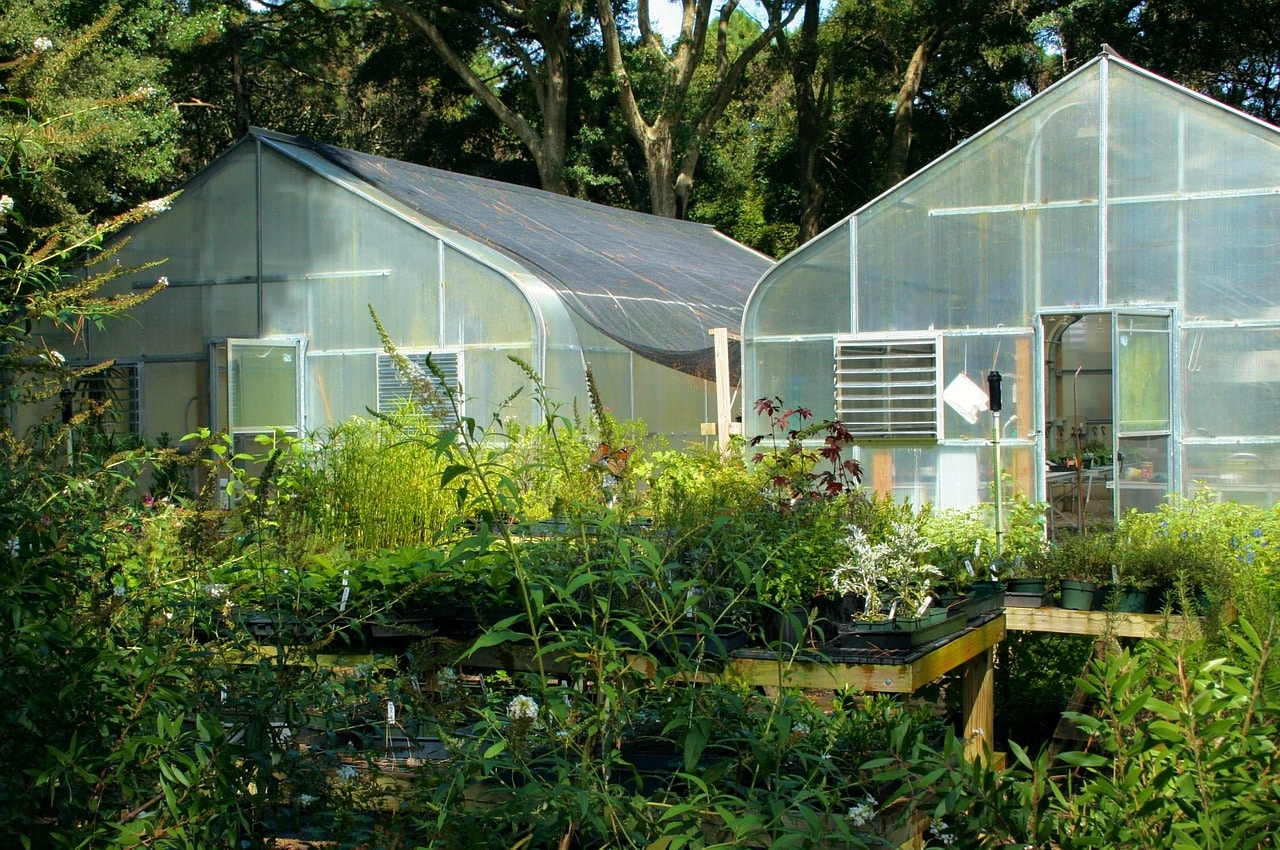If you use a greenhouse and you live in cooler areas, you probably want to know how to heat a hobby greenhouse for free. The easiest and cheapest way to heating your greenhouse is to maximize sunlight. After all, it’s free and it’s effective.
However, there are times when the weather is cloudy or rainy. Plus, the amount of sunlight you get during the winter season is significantly reduced. Fortunately, there are several ways to heat your greenhouse without having to shell out too much cash.

Here are three easy ways to heat your greenhouse for free:
Tip #1. Take advantage of the sun and make sure to insulate
As mentioned, the sun is the easiest method to use – it’s a free source of energy and it’ll never fail in giving you heat. While it’s easier to rely on the sun to heat your greenhouse during summer seasons, it’s more challenging for gardeners to receive a good amount of sun during the winter season.
To make the most out of the heat from the sun during colder seasons, place your greenhouse in an unshaded area where it gets a lot of sunlight. Additionally, it’s also important to insulate your greenhouse.
It’s also a great idea to use transparent plastic to allow sunlight to go into your greenhouse while insulating it at the same time. You can insulate your office with horticultural plastics, but a common bubble wrap will do.
Tip #2. Add thermal mass
Adding thermal mass in your greenhouse one of the best ways to create heat without spending a fortune. Thermal mass stores heat during warm weather, and once the weather cools, the mass will slowly release the heat is stored.
Some examples of thermal mass include stones, straw, paving bricks, water barrels, and other materials dark and heavy materials that store, retain, and slowly release heat during cold weather.
Dark water barrels are effective in storing heat. When your greenhouse’s temperature drops at night, the water barrels will release the heat into your greenhouse, so your plants remain warm and toasty. Darker stones can also serve as effective natural heaters. They store up heat from the sun and release it during cold nights. To further heat your greenhouse, you can cover the ground or soil with straw to prevent heat loss.
Out of all the thermal mass options, water barrels have the highest heat capacity. For best results, you can add as many thermal mass choices in your greenhouse as you would prefer. However, make sure to consider the weather because the last thing you want is an overheated greenhouse.
Tip #3. Use Compost
Compost not only absorbs heat, but they also generate heat. So, what exactly is compost? It’s a mixture of organic materials – food scraps, animal products, dried leaves, etc. – that gardeners add to the soil to help your crops grow. Compost emits heat as it breaks down into the soil.
Aside from generating heat for your greenhouse, compost also enriches the soil for a healthier plant harvest. Place your compost pile in the center of your greenhouse. In this way, it heats your greenhouse from the center.
One of the disadvantages of compost is that it can smell bad (especially if you’re using animal products) and it can attract rodents. If you’re planning to use compost, make sure to use it in an enclosed greenhouse.
Why Use a Mini Greenhouse for Your Plants?
A mini greenhouse is perfect for homeowners and gardeners who want to grow different types of crops. If you’re still on the fence, here are some of the reasons why a mini greenhouse is a great investment:
Shield your plants from unwanted pests and blight
Rodents, aphids, snails, and other insects and animals would love to munch on your leaves produce. Additionally, infectious plant diseases that are affecting your neighbor’s plants can also spread to your garden. But if you place your plants inside an enclosed mini greenhouse, you’ll be able to protect them from unwanted pests, as well as plant diseases.
Protect your crops from bad weather
Storm, heavy rain, high winds, and excessive heat can easily destroy your plants. If you live in areas with unpredictable climates, it helps to grow your plants in a greenhouse. No matter what the weather is outside, your plants can stay warm and safe in an enclosed space.
Great for gardeners with limited space
If you’re into planting but you have limited space, a hobby greenhouse lets you grow almost any type of plant even without a garden. You can place your hobby greenhouse on your balcony, deck, or patio.
Extend the growing season
With a mini greenhouse, you can start planting your crops even before the cold season, as well as through the winter. Once the weather becomes more favorable, you can transplant your plants into your garden and harvest them earlier than you intended to.
Final Thoughts on How to Heat a Hobby Greenhouse for Free
Sometimes, the cost of heating a greenhouse can be overwhelming, especially during the winter season. Knowing how to heat a hobby greenhouse for free goes a long way in keeping energy costs down. Adding compost, thermal mass, and taking advantage of sunlight can help keep your plants warm regardless of the weather.
